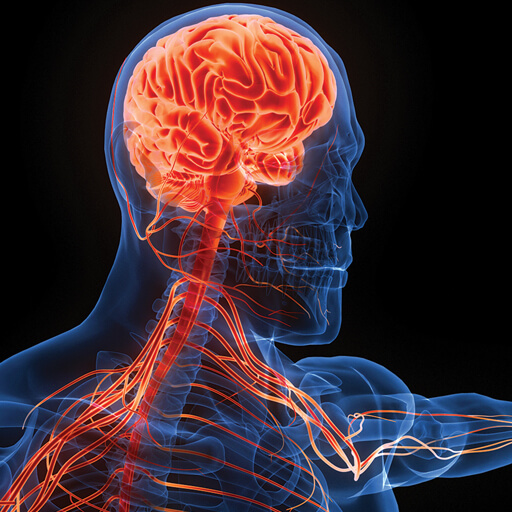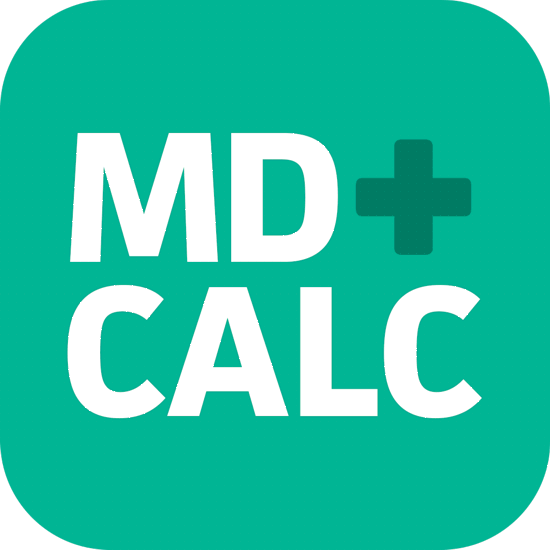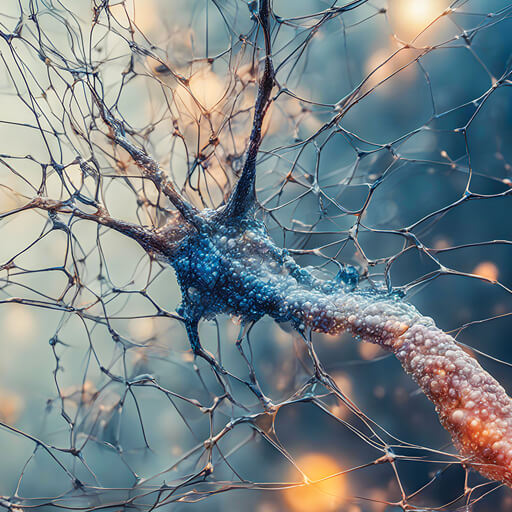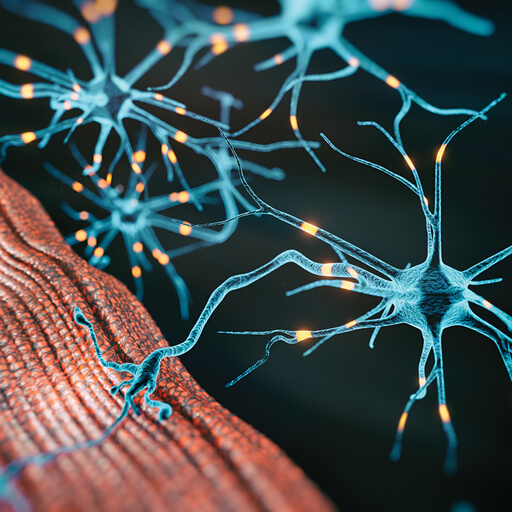Neurology CME
16 - 29 of 29 results
-
FREE
ScientiaCME Management Of Lennox-Gastaut Syndrome (LGS) With Strategies That Have Legs
- Cost: Free
- Credit hours: 1
- CME credits awarded by: ScientiaCME
- Format: On-Demand Online
- Material last updated: April 05, 2025
- Expiration of CME credit: April 05, 2027
-
30% OFF W/ CODE: CME30
Oakstone CME Samuels Comprehensive Review of Neurology
Discover the Latest in Neurology CME
The Samuels Comprehensive Review of Neurology includes 65 one-hour lectures and offers a broad, evidence-based look at common and uncommonly seen disorders, as well as best practices in diagnosis and management. Authoritative and clinically experienced faculty share pearls, pitfalls, and practical continuing medical education updates.
Named for the late Dr. Marty Samuels, long-time Oakstone CME contributor, beloved educator, inspirational mentor, and legend in the field of neurology, this online video CME program provides important strategies — including judicious use of imaging and lab testing — that will help you treat patients with neurological disorders and achieve the best clinical outcomes.
See full details chevron_right- Cost: $995
- Credit hours: 59
- CME credits awarded by: Oakstone Publishing
- Format: On-Demand Online, USB Flash Drive
- Material last updated: December 31, 2023
- Expiration of CME credit: December 30, 2026
-
Oakstone CME Addiction Medicine for Non-Specialists
This activity meets the Drug Enforcement Administration (DEA) and Substance Abuse and Mental Health Services Administration (SAMHSA) requirement that as of June 27, 2023, new or renewing DEA registrants must complete a minimum of 8 hours of accredited continuing education (CE) on the treatment and management of patients with opioid or other substance use disorders before renewing their license.
See full details chevron_right- Cost: $595
- Credit hours: 24.75
- CME credits awarded by: Oakstone Publishing, LLC.
- Format: On-Demand Online
- Material last updated: April 30, 2025
- Expiration of CME credit: April 29, 2028
-
MDCalc Stroke CME
Your MDCalc CME subscription includes 15 AMA PRA Category 1 Credits™, with up to 10.5 credits available in the Stroke specialty.
Easily earn and redeem CME as you use review CME eligible calculator content. Over 1 million medical professionals use MDCalc’s over 550 tools daily to support clinical decision making at the bedside. Earn CME with the following Stroke calculators:
- FUNC Score
- ASTRAL Score
- ATRIA Bleeding Risk
- HEMORR2HAGES Score
- Hunt & Hess Classification
- Intracerebral Hemorrhage (ICH) Score
- MEWS Score
- mSOAR Score
- NEWS Score
- NIH Stroke Scale (NIHSS)
- RACE Scale
- SEDAN Score
- tPA Dosing for Stroke Calculator
- Cost: $199
- Credit hours: 15
- CME credits awarded by: EB Medicine and MD Aware, LLC.
- Format: On-Demand Online, Mobile App
-
30% OFF W/ CODE: CME30
Oakstone CME Neurology for Non-Neurologists
Expert CME Review of Neurological Conditions
Neurology for Non-Neurologists is an updated collection of concise 30- to 45-minute video CME lectures presented by faculty who excel in their clinical and teaching expertise. It covers all clinical neurology subspecialties and includes 70 lectures on the common and uncommon neurological problems encountered in the non-neurologist’s practice.
This online continuing medical education program will improve your ability to positively impact the care of patients with neurological symptoms and help bring about the best possible outcomes. Along with lectures discussing innovations, disparities, and inclusivity of neurological care, highlighted topics include:
- Holistic care of the Parkinson’s patient
- Stroke recovery
- CGRP inhibitors and migraine treatment
- Electrolyte disorders
- Neuro-palliative care
- TBI diagnosis and treatment
- and more…
- Cost: $695
- Credit hours: 36.5
- CME credits awarded by: Oakstone Publishing
- Format: On-Demand Online, Online Video, Online Audio, Audio CD
- Material last updated: August 31, 2022
- Expiration of CME credit: August 31, 2025
-
FREE
ScientiaCME (Multiple Sclerosis) Neuropsychiatry-Neurology
Target Audience: Neurologists
See full details chevron_right- Cost: Free
- Credit hours: 2
- CME credits awarded by: ScientiaCME
- Format: On-Demand Online
- Expiration of CME credit: Two years after release
-
FREE
ScientiaCME Transthyretin-mediated amyloidosis (ATTR): successful identification and its role in optimizing outcomes
Activity Description / Statement of Need:
In this online, self-learning activity:Transthyretin-mediated amyloidosis (ATTR) is a progressive, multisystem, life-threatening disorder characterized by the extracellular deposition of misfolded, insoluble amyloid fibrils. The role of the TTR protein is to transport thyroxine and retinol-binding proteins, and it is vital for cognition, nerve regeneration, and axonal growth. TTR itself is innately amyloidogenic even without the presence of genetic mutations, which may account for wild-type ATTR (wtATTR), while a hereditary form of ATTR (hATTR) may be passed to offspring through autosomal dominant inheritance. Left untreated, the average life expectancy of ATTR is 3 to 15 years from symptom onset.
Target Audience:
See full details chevron_right
The following HCPs: neurologists, cardiologists, and hematologists; physician assistants, nurse practitioners, and pharmacists in the aforementioned areas of specialty; and any other HCPs with an interest in or who may clinically encounter patients with ATTR.- Cost: Free
- Credit hours: 1
- CME credits awarded by: ScientiaCME
- Format: On-Demand Online
- Material last updated: December 15, 2023
- Expiration of CME credit: December 15, 2025
-
30% OFF W/ CODE: CME30
Oakstone CME Electrodiagnostic Medicine and Neuromuscular Disorders
Convenient, Comprehensive Neurology and PM&R CME
Designed for neurologists and physical medicine & rehabilitation doctors, residents, and fellows, this continuing medical education program covers all diagnostic and management approaches to both inherited and acquired neuromuscular conditions.
The 41 lectures in Electrodiagnostic Medicine and Neuromuscular Disorders — each just 30 and 45 minutes in length — delve into basic techniques and clinical applications of electrodiagnosis and ultrasound, as well as generalized disorders, motor neuron diseases, polyneuropathies, neuromuscular junction disorders, and myopathies. Key take-home points from this online CME program include:
- Basics of Needle EMG: Voluntary Activity. Motor unit potential waveform reflects the change in motor unit architecture due to disease processes, while the interference pattern provides information about the number of motor units and their activation.
- Neuropathies Associated with Systemic Disease and Cancer. Countless systemic disorders — metabolic, nutritional, inflammatory, infectious, neoplastic, and others — can cause neuropathy and accordingly, neuropathy can take many forms. Carefully characterizing the phenotype of neuropathy can help narrow down the relevant causes.
- Muscle Channelopathies. For a patient with a personal and family history of muscle stiffness and pain, consider genetic testing for myotonic disorders.
- And more…
- Cost: $1145
- Credit hours: 28.50
- CME credits awarded by: Oakstone Publishing, LLC.
- Format: Online, On Demand
- Material last updated: February 15, 2023
- Expiration of CME credit: February 15, 2026
-
FREE
ScientiaCME Charting the course to best practice in the recognition and management of amyotrophic lateral sclerosis (ALS)
- Cost: Free
- Credit hours: 1
- Format: On-Demand Online
- Material last updated: 02/06/2024
- Expiration of CME credit: 02/06/2026
-
FREE
ScientiaCME Thymidine kinase 2 deficiency identification and management: TK2D-MDDS, do you copy?
Activity Description / Statement of Need:
In this online, self-learning activity:
Thymidine kinase 2 deficiency (TK2D) is an ultrarare mitochondrial disease caused by recessive mutations in the TK2 gene and manifesting as a form of mitochondrial DNA depletion/deletion syndrome (MDDS) and mitochondrial myopathy. Under normal conditions, the TK2 gene encodes for the thymidine kinase enzyme present in the mitochondria, which is responsible for the phosphorylating of pyrimidine nucleosides, deoxythymidine, and deoxycytidine. These are the first steps in mitochondrial DNA synthesis, and researchers speculate that TK2 mutations affect muscle tissue because its higher energy demands make it most susceptible to mitochondrial impairment. Mutational analyses of patients with MDDS have found that approximately 15% have TK2 mutations, which may be extrapolated to about 600 to 2,700 individuals in the US.
Target Audience:
HCPs including but not limited to: neurologists, pediatric neurologists, pediatricians, primary care providers, pulmonologists, gastroenterologists, and medical geneticists; physician assistants, nurse practitioners, pharmacists, and nurses who practice in the aforementioned areas of specialty; and any other HCPs with an interest in or who may clinically encounter patients with TK2D.
See full details chevron_right- Cost: Free
- Credit hours: .75
- Format: On-Demand Online
- Material last updated: 02/07/2025
- Expiration of CME credit: 02/07/2027
-
FREE
ScientiaCME Best practices and opportunities for improvement in the medical management of Dravet syndrome
In this online, self-learning activity:
Dravet syndrome (DS) is a rare form of early-onset epilepsy syndrome affecting between 1:16,000 and 1:46,000 and is associated with pleomorphic seizure activity, cognitive decline, motor, and behavior abnormalities. Sudden unexpected death in epilepsy is the cause of death in nearly half of the deaths in patients with DS, with the mean age of death 8.7 years old and 73% of deaths occurring before age 10. Seizures typically begin in the first year of age, with most occurring between months 5 and 8, and it is usually a prolonged, tonic-clonic (accounting for 52% of first seizures) or hemiclonic (35%) seizure. Environmental triggers or events, such as fever, acute stress, and physical exercise may precipitate seizures, and at least 85% of those who are clinically diagnosed with DS have variations in the SCN1A gene. Unfortunately, diagnosis is not uncommonly delayed until a patient 3 years of age or older, prior to which antiseizure medication selection may be suboptimal or ineffective, which may lead to seizure exacerbation, an increased risk of status epilepticus, and worse cognitive outcomes.
See full details chevron_right- Cost: Free
- Credit hours: 1
- CME credits awarded by: ScientiaCME
- Format: On-Demand Online
- Material last updated: 03/02/2025
- Expiration of CME credit: 03/02/2027
-
UNAVAILABLE
GIBLIB CME Plan
GIBLIB is an on-demand streaming medical education platform where physicians and advanced practice providers go to learn and earn CME through convenient, high-quality educational content created by trusted experts from the world’s top hospitals.
With this purchase, you get a 1-year subscription to GIBLIB and the following features:
- Earn unlimited AMA PRA Category 1 Credits™
- Full library access to thousands of videos across all specialties
- Personalized and curated video recommendations
- Cross-device viewing on web and iOS
- New content released and available every week
- Create custom playlists that you can personally curate
- Bookmark videos for later viewing
- Take notes on specific content and review for later
- View transcripts of all videos, available in multiple languages
- Credit hours: Unlimited
- Format: Videos, Audio, Podcasts, Transcripts (on every Video)
-
UNAVAILABLE
Scientia CME – Staying Ahead of the Curve: Navigating the Rapid Advances in Myelin Oligodendrocyte Glycoprotein Antibody Disease (MOGAD)
Myelin oligodendrocyte glycoprotein antibody disease (MOGAD) is a demyelinating, autoimmune condition affecting the central nervous system. MOGAD is characterized by the presence of autoantibodies directed against the MOG protein located on the surface of myelin sheaths surrounding nerve fibers in the CNS. The disease course may be monophasic or relapsing, and a progressive course is extremely rare, making the mortality rate fairly low (2.1%) compared to other neuroinflammatory diseases. It is a relatively new addition to the category of demyelinating diseases, and approximately 10,000 cases of MOGAD are estimated within the U.S.
See full details chevron_right- Credit hours: 1
- CME credits awarded by: ScientiaCME
- Format: On-Demand Online
- Material last updated: March 20, 2025
- Expiration of CME credit: March 20, 2027
-
UNAVAILABLE
ScientiaCME Waking to our potential in the management of narcolepsy and excessive daytime sleepiness: Treatment updates and gaps in care
Activity Description / Statement of Need:
In this online, self-learning activity:
Narcolepsy is a neurologic disorder characterized by inappropriate regulation of the sleep-wake cycle and excessive sleepiness during waking hours. Affected individuals may fall asleep at inappropriate times, such as when talking to others, eating, or even driving. Roughly 135,000 to 200,000 people in the United States are estimated to have narcolepsy. Women and men are affected by narcolepsy equally, and most patients begin having symptoms between the ages of 7 and 25 years. The treatment of narcolepsy may be complicated and must be tailored individually after careful evaluation of the patient’s symptoms.
Target Audience:
The following HCPs: neurologists, internists, PCPs, psychiatrists; nurse practitioners, physician assistants, and pharmacists who specialize in the aforementioned areas of specialty; and those who otherwise commonly care for or clinically encounter patients with sleep disorders.
See full details chevron_right- Credit hours: 1
- CME credits awarded by: ScientiaCME
- Format: On-Demand Online
- Material last updated: 03/22/2023
- Expiration of CME credit: 03/22/2025










